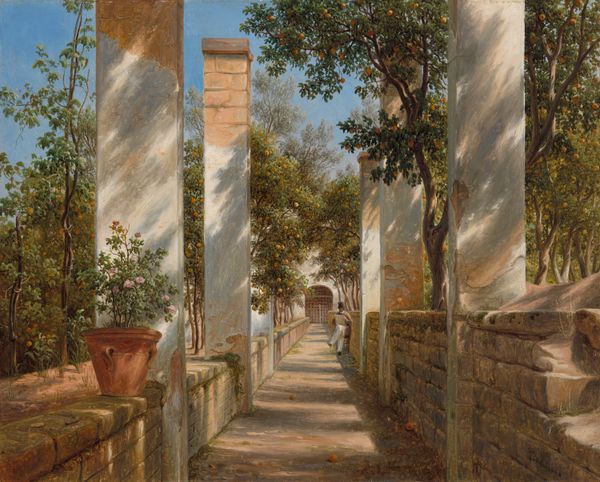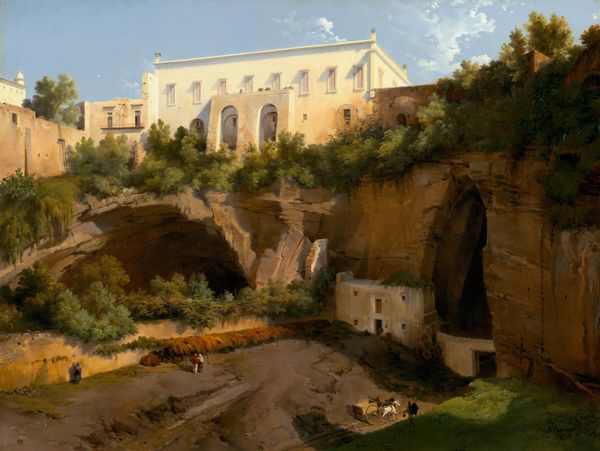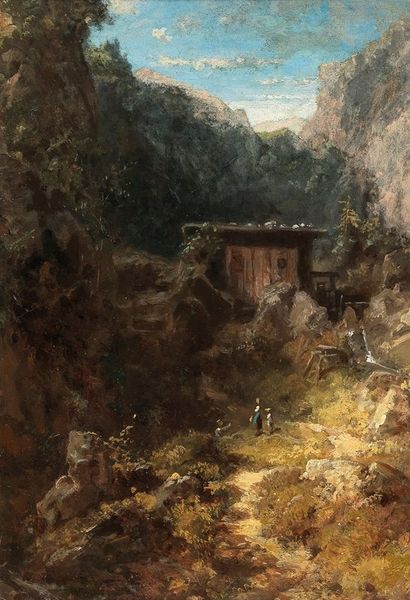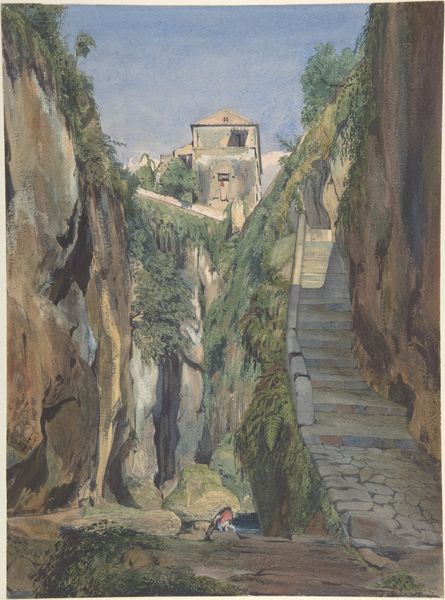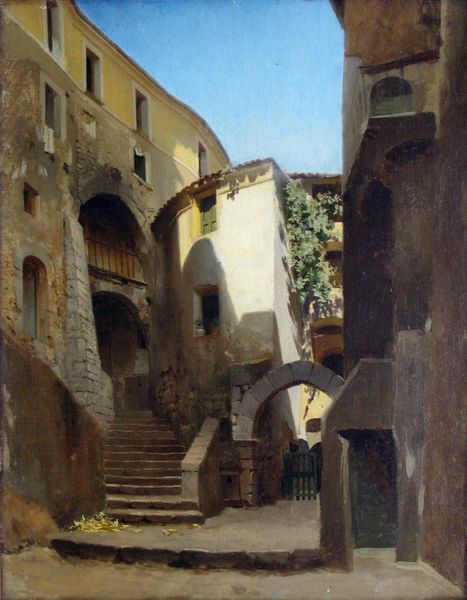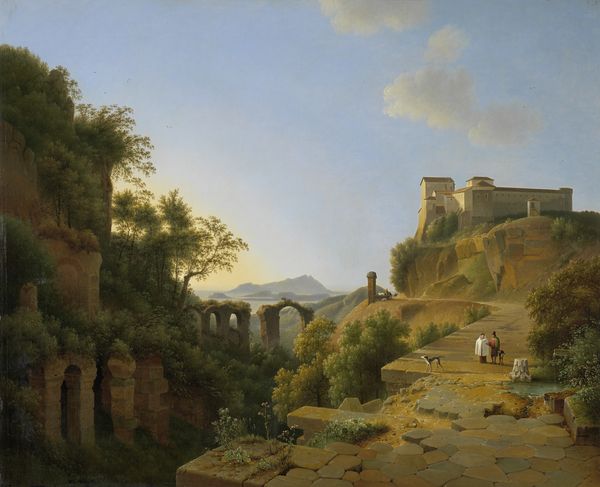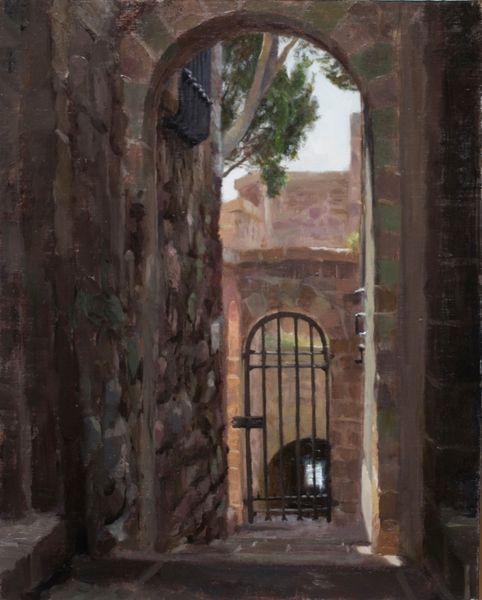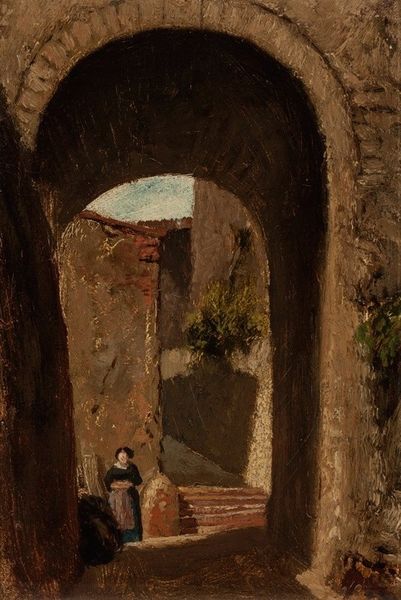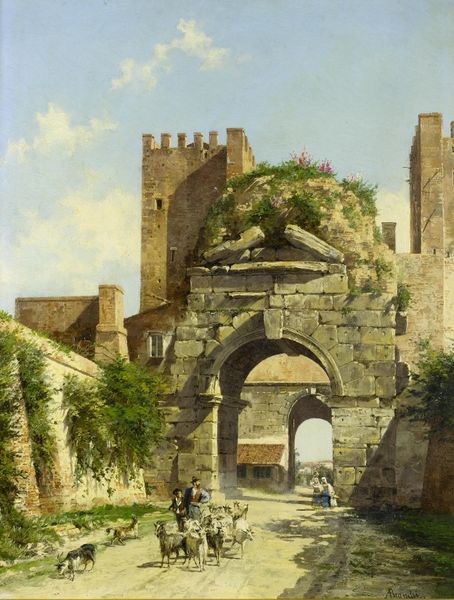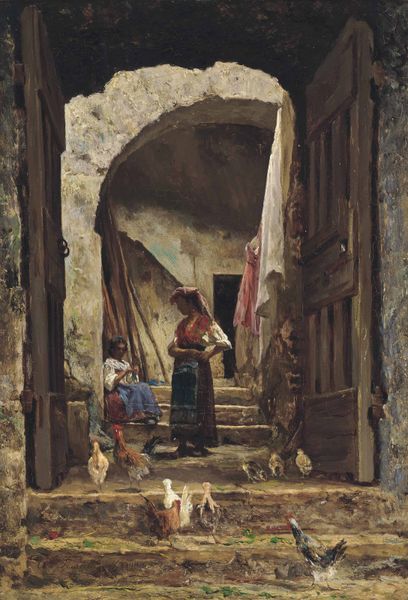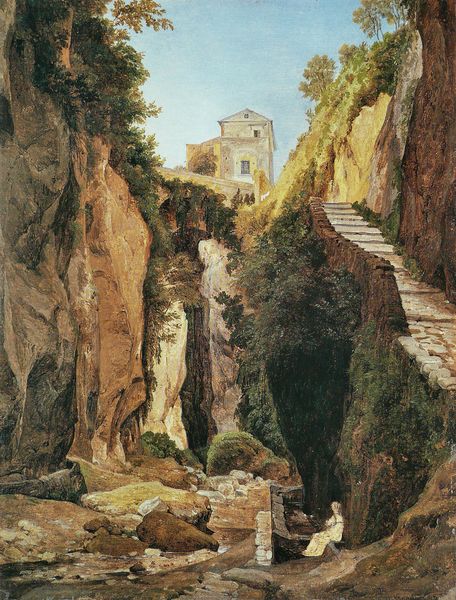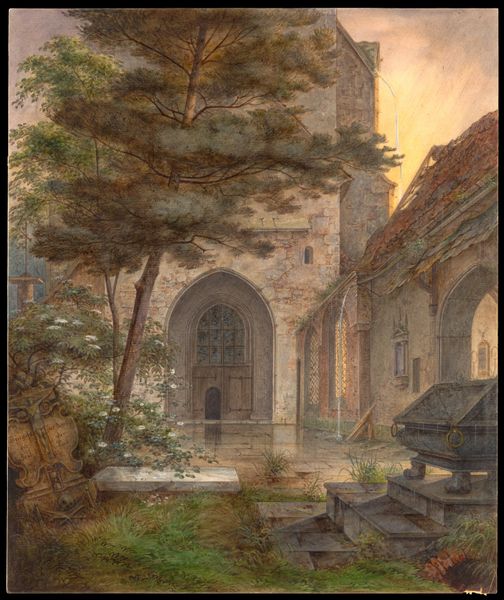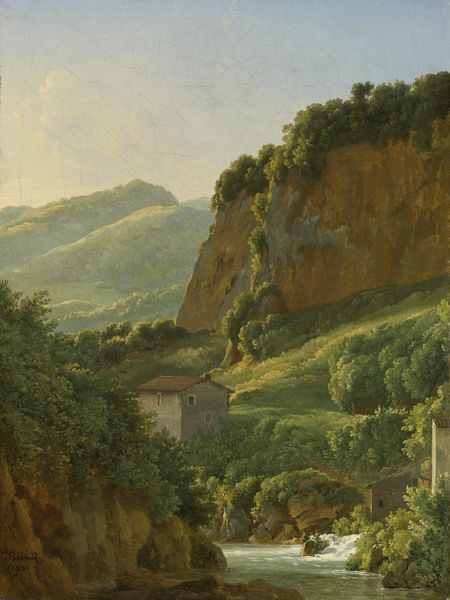
painting, plein-air, oil-paint
#
painting
#
plein-air
#
oil-paint
#
landscape
#
oil painting
#
romanticism
#
cityscape
#
realism
Dimensions: height 52 cm, width 39.3 cm
Copyright: Rijks Museum: Open Domain
Antonie Sminck Pitloo painted The Grotto of Posillipo at Naples in the 19th century with oil on canvas. The tunnel represents more than mere passage; it is a symbol laden with historical weight, echoing ancient Roman engineering. The grotto itself, carved through rock, evokes the underworld, a motif found in countless myths and legends. Consider Virgil's Aeneid, where the hero descends into the underworld through a cave. The archway in Pitloo's grotto, a classical element, recalls triumphal arches, gateways to glory and imperial power. Yet, here, it frames darkness, hinting at hidden depths and the unknown. This motif of the arched gateway as a symbolic threshold is a recurring theme across cultures. It serves as a powerful visual cue, engaging our collective memory and subconscious associations. What lies beyond the threshold? The darkness invites us to ponder the mysteries of the past and the depths of our own psyche.
Comments
rijksmuseum about 2 years ago
⋮
The grotto of Posillipo at Naples is a natural tunnel, 700 metres long and six metres high. The cave was a regular attraction for artists and tourists in Italy. Pitloo represented the passage as a narrow opening that swallows up the light. Closer inspection reveals a faint gleam at the far end of the tunnel. The dark cave contrasts dramatically with the sun-drenched rock wall.
Join the conversation
Join millions of artists and users on Artera today and experience the ultimate creative platform.
